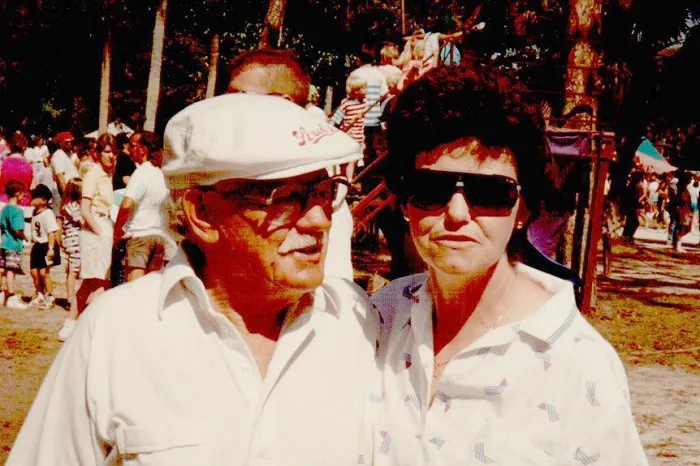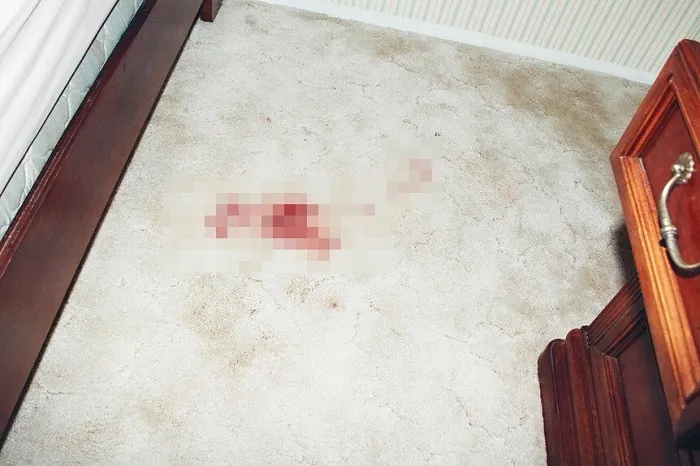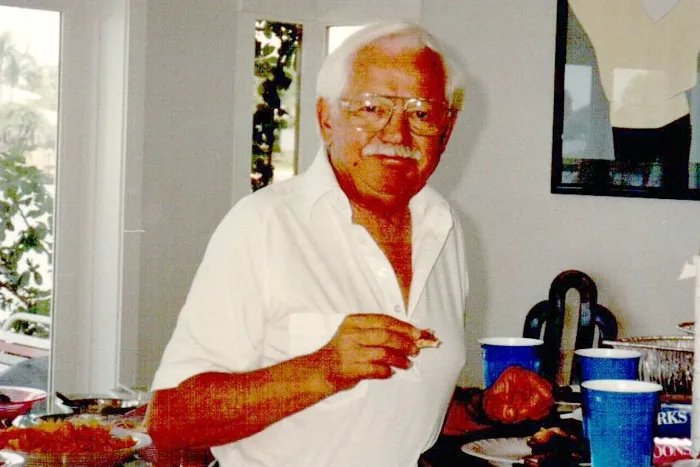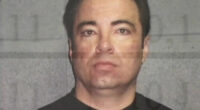Though brutally beaten with a crushed trachea, Janet Scott survived the attack, while her boyfriend was not so fortunate. Investigators did not take long to realize this was no random assault.

The Horrific Attack
Henry Caneva was born in Italy. At age 12, Henry and his family moved to Wyoming, USA where he quickly adapted to the new life.
At 18, he joined the Navy and met his future wife. In 1957, they married and settled in Fresno, California. Children were born one after another.
After leaving the Navy, Henry became a car salesman. The job suited his outgoing, talkative personality. But from here, cracks began to appear in the marriage. Finally, the couple divorced in 1972.
In contrast to his unlucky love life, Henry’s career thrived. He became a top salesman at a local dealership.
In the course of his work, Henry met a female customer named Janet Scott. Janet was 47 and recently widowed. They quickly took a liking to each other and began dating. Before long, Henry moved in with Janet.
Happiness seemed to smile on Janet and Henry again as they settled into a quiet life with Janet’s dog in their Sarasota, Florida home.
But then it all came crashing down on June 20, 1997, when Janet staggered to a neighbor’s house around 3:43 am. She had been savagely beaten and could barely speak.
The Cigarette on the Lawn
On the 911 call, the dispatcher could hear the neighbor ask Janet if Henry was inside. Janet managed to confirm he was, before being rushed to the ER.
At the scene, police found Henry dead in the master bedroom, strangled with a belt.
There was blood on the curtains and headboard. A bloody pillow with a shoe print was on the floor. By Janet’s side of the bed was a pool of blood – police believed she had fallen off and lay face down. The killer likely thought they were both dead and fled quickly. The phone line was also cut and a rubber glove was left behind.
A robbery was ruled out as the victims’ cash and credit cards remained untouched. The rear door facing the lake was unlocked.
The police went around the house, they found a cigarette butt on the lawn. They determined it had been discarded around the time of the murder as it was dry while the grass was dew-soaked.
By late that morning, news of Henry’s murder and Janet’s assault spread quickly. Neighbors spoke highly of the couple, describing Henry as a kind man. No one saw or heard anything suspicious.
Police headed to the hospital, hoping to interview Janet. However, doctors said her trachea had been crushed in the beating. A team of armed police was arranged to protect Janet’s front door.
The Secret Life

Henry’s son and daughter later arrived to make funeral arrangements. Police considered if they had a motive to inherit his estate. Both said they knew their father had money but not how much exactly. They also didn’t know much about his life since he had moved away. Henry kept his private matters private from everyone.
The two children passed lie detector tests and were eliminated as suspects.
Next, police interviewed one of Henry’s younger, successful car salesman colleagues named Frank. Henry and Frank were reportedly competing for the top salesman position. A few weeks before the murder, they had confronted each other at work. An argument had ensued.
Frank admitted they did argue and it angered him. However, he maintained they were friends who often joked around. Frank passed a lie detector and agreed to provide DNA, which did not match the cigarette butt found at the scene.
The Stolen Rings
About a week after the attack, police returned to the hospital to see Janet, who had just undergone a tracheotomy and still couldn’t speak but could write.
Janet revealed she had woken around 3 am on June 20th to find someone leaning on her thigh while another person held her down. She remembered slapping one of them and telling them to get off. One of the attackers yelled, “Die, bitch!”
Janet then blacked out. Later, she regained consciousness hearing a noise and realizing she was struggling to breathe. As her attackers left, Janet tried to get to a phone but couldn’t. That’s when she dragged herself to the neighbor’s for help.
She could not identify her attackers’ faces. The distraught woman didn’t know who would want to harm her and Henry. Her dog had also been killed.
Police showed Janet crime scene photos of the bedroom. She said she always kept her rings and watches on her nightstand but the rings were missing – one with a blue topaz stone Henry had gifted her, the other from her late husband.
Investigators immediately went to local pawn shops hoping to track down the stolen rings.
The Shocking Revelation

It wasn’t until January 5th, 1998, six months after the murder, that investigators got a new lead when local police responded to a domestic dispute call.
41-year-old Lela Whiteley accused her husband, 39-year-old John Whiteley, of assaulting her. When officers arrived, they separated the couple. John yelled at his wife, threatening that if she called the police again, he would turn her in for stealing rings from the attack on St. Louis Boulevard.
This immediately piqued the interest of detectives, as victims Janet and Henry also lived on St. Louis Boulevard, and details about Janet’s stolen rings had never been released publicly.
Police looked into John and Lela’s backgrounds. This wasn’t the first domestic violence incident for the couple – John had previously choked Lela and had a criminal record.
Meanwhile, they discovered Lela had used several different names, her maiden name being Scott. She was Janet’s late husband’s daughter from another relationship and had previously lived with her stepmother.
The Discarded Cigarette
Janet revealed that Lela was around 30 when they first met. Lela had always been troubled and had a poor relationship with her father.
According to Janet, while she and Lela were friendly, Lela resented her father having another woman in his life. They stayed in touch for a time after Lela’s father passed away, but lost contact after Lela’s previous divorce.
Police searched John and Lela’s home, but didn’t have enough evidence yet to directly tie either of them to Janet’s attack. However, they kept surveillance on the couple.
After days of inactivity, they followed John and Lela to a local restaurant, collected a cigarette butt John discarded, and sent it to the crime lab. The DNA matched the sample from the cigarette butt at the crime scene.
On November 24th, 1998, John Whiteley was arrested. Both he and Lela were questioned by police. Lela immediately requested a lawyer.
In the interrogation room with John, detectives laid out all the evidence they had. The suspect’s face turned pale seeing it all. Police also told John that Lela had confessed everything.
The Crime from Greed

John believed this and said he wanted to make a deal. The man blamed his wife for the crimes. John admitted Lela was the biological daughter of Janet Scott’s late husband.
John revealed Lela’s motive was that she had always felt she should inherit the house her stepmother lived in, and Henry shouldn’t be living there. Lela told John that her father’s will stated Janet couldn’t live with another man or the house would go to Lela.
She believed if she took out Janet and Henry, the house would be hers. John emphasized his wife was the killer. He admitted being present at the crime scene the night of the murder, saying Lela initially planned to go alone but he then followed just to see if she would actually do it.
After John’s confession, police told Lela that John had betrayed her. Hearing this, Lela also requested a deal. She insisted it was all John’s idea – he wore the rubber glove and used pliers to cut the phone line. He also personally strangled Henry with his own belt.
The Reluctant Verdict
Despite the conflicting stories from the couple, authorities charged both with first-degree murder and conspiracy to commit murder.
When Janet was informed of the arrests and suspects’ identities, she was “shocked and horrified.” She hadn’t seen or heard from her late husband’s daughter since he passed away.
However, beyond the cigarette butt, police had little physical evidence tying John and Lela to the crimes. They did not find DNA on victim Henry’s body or the belt used in the crime.
Prosecutors knew they were gambling by taking the case to trial, as it would be difficult to prove exactly what actions each took in the attack. Both John and Lela were blaming the other as the actual killer.
The victims’ families reluctantly agreed to plea deals for the suspects, feeling it was the best justice the authorities could provide.
In the spring of 2000, John and Lela each received 20 years in prison for the aggravated battery of Janet and the murder of Henry. Both were released in 2015 after getting 5 years off for good behavior.









